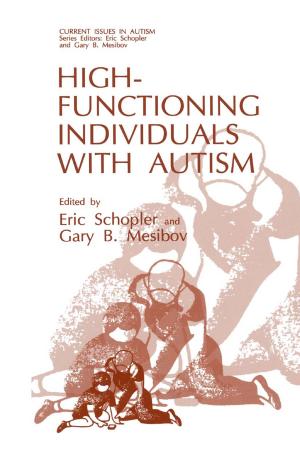A Practical Guide to Head Injury Rehabilitation
A Focus on Postacute Residential Treatment
Nonfiction, Health & Well Being, Medical, Specialties, Psychiatry, Psychology, Clinical Psychology| Author: | Michael D. Wesolowski, Arnie H. Zencius | ISBN: | 9781475789911 |
| Publisher: | Springer US | Publication: | June 29, 2013 |
| Imprint: | Springer | Language: | English |
| Author: | Michael D. Wesolowski, Arnie H. Zencius |
| ISBN: | 9781475789911 |
| Publisher: | Springer US |
| Publication: | June 29, 2013 |
| Imprint: | Springer |
| Language: | English |
Behavioral neuropsychology presents at once achallenge and an opportunity for the field ofbehavior analysis. A great diversity of problem areas-including education, classroom management, child rearing, retardation, and industry have been treated effectively by the behavior analytic approach, which has traditionally and quite deliberately chosen to deemphasize physiology and cognitive variables. Yet brain injury, by its nature, entails neurological insult that is often closely related to specific cognitive dysfunctions. The challenge for behavior analysis is to develop effective treatments for a disorder with such clearly defined tripartite characteristics. The opportunity exists for be havior analysis to expand its conceptual basis as well as to provide benefits to patients otherwise despairing of assistance. Case histories demonstrate over 20 years of successful applications of behavior analysis to brain-injured in dividuals, indicating that some applications are possible, but are these reports notable exceptions or the harbingers of a new general therapeutic approach? The present book describes an overall focused behaviaral program far dealing with the diversity of brain injury problems in a general brain injury rehabilitation setting. The authors describe what types of neurological damage are associated with specific types of cognitive/emotional dysfunction and in turn with specific types ofbehavioral dysfunction, thereby demonstrating how the choice ofbehavioral treatment is guided by the neurological and subjective assessment. The result is a conceptually unified approach. The distinctive value of this book lies in the detail as well as the pro grammatic guidelines for actual implementation ofthis behavioral approach.
Behavioral neuropsychology presents at once achallenge and an opportunity for the field ofbehavior analysis. A great diversity of problem areas-including education, classroom management, child rearing, retardation, and industry have been treated effectively by the behavior analytic approach, which has traditionally and quite deliberately chosen to deemphasize physiology and cognitive variables. Yet brain injury, by its nature, entails neurological insult that is often closely related to specific cognitive dysfunctions. The challenge for behavior analysis is to develop effective treatments for a disorder with such clearly defined tripartite characteristics. The opportunity exists for be havior analysis to expand its conceptual basis as well as to provide benefits to patients otherwise despairing of assistance. Case histories demonstrate over 20 years of successful applications of behavior analysis to brain-injured in dividuals, indicating that some applications are possible, but are these reports notable exceptions or the harbingers of a new general therapeutic approach? The present book describes an overall focused behaviaral program far dealing with the diversity of brain injury problems in a general brain injury rehabilitation setting. The authors describe what types of neurological damage are associated with specific types of cognitive/emotional dysfunction and in turn with specific types ofbehavioral dysfunction, thereby demonstrating how the choice ofbehavioral treatment is guided by the neurological and subjective assessment. The result is a conceptually unified approach. The distinctive value of this book lies in the detail as well as the pro grammatic guidelines for actual implementation ofthis behavioral approach.















